Nerve fibers can be classified as A, B and C and A type fibers can be further classified into alpha, beta, gamma and delta. The size and myelination (thus conduction) progressively decreases in the descending order.
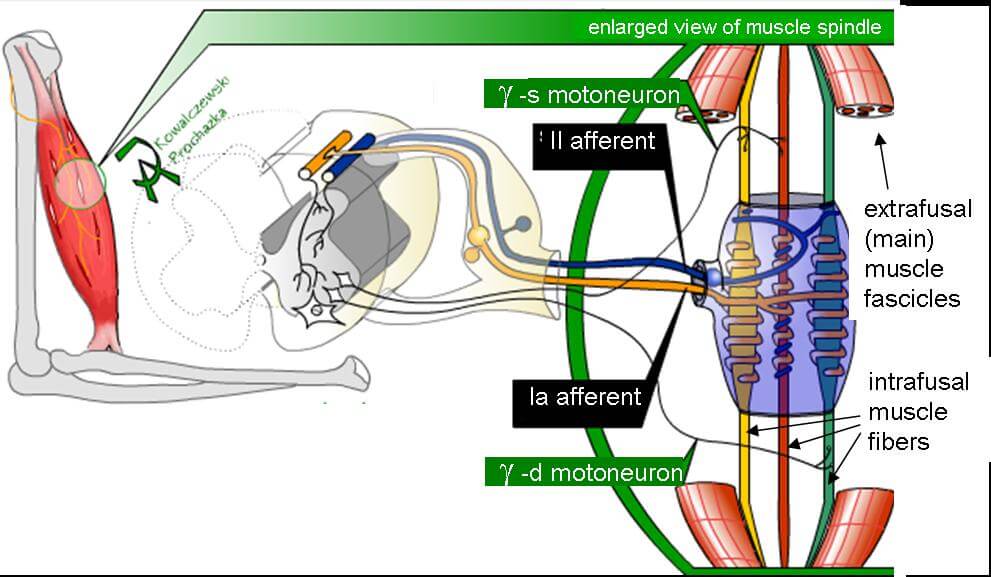
A alpha:
- Efferent (Somatic motor) – To extrafusal fibers (muscle spindle)
- Afferent (Proprioception):
- Ia – Muscle spindle (Annulospiral endings)
- Ib – Golgi tendon organ
spindLE = LEngth of muscle
TENdon = TENsion of muslcle
A beta:
- Mechanoafferents of skin (Fine touch, Pressure, Vibration)
- Type II afferent fibers (secondary fibers from muscle spindle)
A gamma:
Efferents – To intrafusal fibers (muscle spindel)
A delta:
Fast (sharp) pain and Temperature (cold)
B: Preganglionic sympathetic (Autonomic nervous system)
C:
- Dorsal root: Slow pain, Temperature (hot)
- Sympathetic: Postganglionic
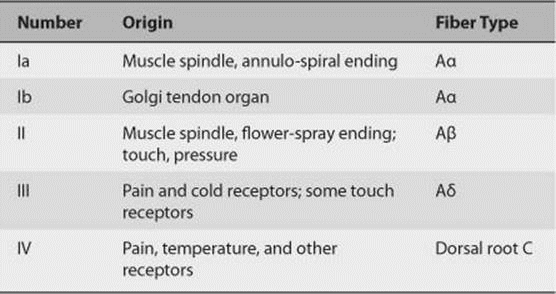
Motor fibers:
| Type | Erlanger-Gasser Classification | Diameter | Myelin | Conduction velocity | Associated muscle fibers |
|---|---|---|---|---|---|
| α | Aα | 13–20 μm | Yes | 80–120 m/s | Extrafusal muscle fibers |
| γ | Aγ | 5–8 μm | Yes | 4–24 m/s | Intrafusal muscle fibers |
Afferent fibers:
| Type | Erlanger-Gasser Classification | Diameter | Myelin | Conduction velocity | Associated sensory receptors |
|---|---|---|---|---|---|
| Ia | Aα | 13–20 μm | Yes | 80–120 m/s | Muscle spindle |
| Ib | Aα | 13–20 μm | Yes | 80–120 m/s | Golgi tendon organ |
| II | Aβ | 6–12 μm | Yes | 33–75 m/s | Secondary receptors of muscle spindle All cutaneous mechanoreceptors |
| III | Aδ | 1–5 μm | Thin | 3–30 m/s | Free nerve endings of touch and pressure Nociceptors of neospinothalamic tract Cold thermoreceptors |
| IV | C | 0.2–1.5 μm | No | 0.5–2.0 m/s | Nociceptors of paleospinothalamic tract Warmth receptors |
Susceptibilities of the nerve fibers to LA, pressure and hypoxia:
- A fibers are most susceptible to pressure
- B fibers are most susceptible to hypoxia
- C fibers are most susceptible to local anaesthetics
- C fibers are least susceptible to hypoxia and pressure
- A fibers are least susceptible to local anaesthetics
If you have any mnemonics or ideas for remembering these, share with the world by writing in the comments.
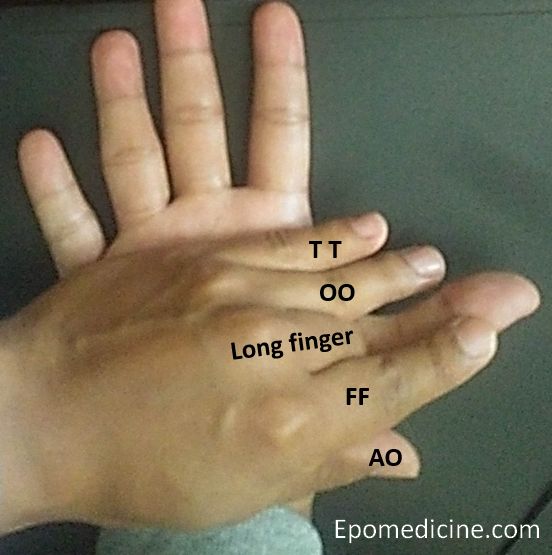
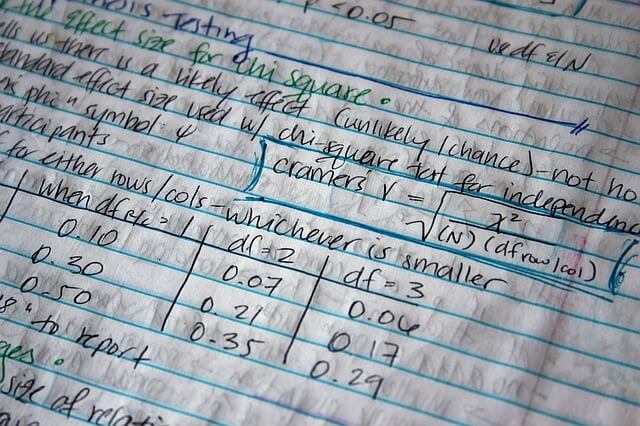
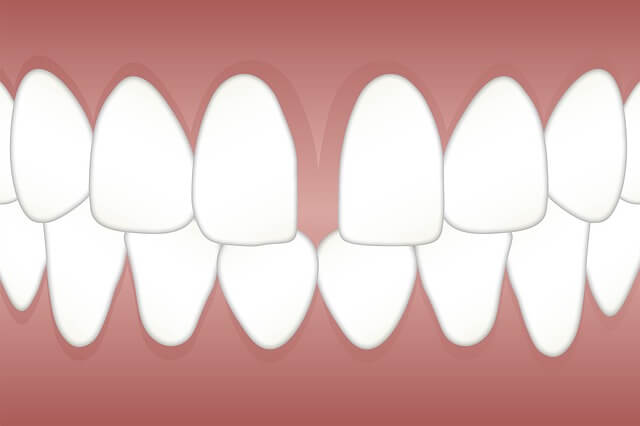
IT’S help me a lot easy way to learn more in short time .great work
susceptibility to various agents : HPA axis ( hypoxia , pressure anaesthesia )
most susceptible to least susceptible
B A C k
A B B
C
k
May I know y they are susceptible for particular condition??
i want to know the reason why they are susceptible to those conditions